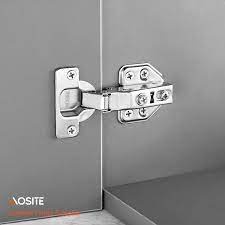Hinges are used in a wide variety of objects like cabinets, doors, gates, briefcases and storage containers. They join objects together by rotating them on a limited axis and are an essential piece of hardware.
Choosing the right hinge can help you save money and maximize your Return on Investment. This is especially important when purchasing a high-quality product.
Material
Many hinge suppliers offer a variety of materials. Consider what type of material will be best suited to your specific application needs, including aesthetics, dimensions and weight, environmental conditions and industry regulations and requirements.
For example, if your hinges will be exposed to moisture or salty air, you may want to choose brass for greater weather resistance than coated steel. Conversely, if your hinges will be visible in public areas and must meet ADA and OSHA standards for accessibility, stainless steel may be the right choice.
Ask the supplier about manufacturing and testing processes. A reputable manufacturer will be willing to share their expertise in the design, production and testing of their hinges. They will be able to explain how their process ensures long-lasting corrosion resistance, durability and “cleanability” while also meeting your aesthetic expectations. They will also likely provide optional features to further refine the look of your hinges without compromising functionality. This will ultimately enhance the Return on Investment of your project.
Design
Choosing the right hinge can enhance the return on investment for a project. The choice may be based on cost and convenience, but other factors also contribute to the value of a hinge solution, including corrosion resistance, durability, cleanliness, and a refined appearance. A proven supplier will share the testing and manufacturing processes that assure quality, reliability and functionality.
Hinges can be designed to meet a wide range of specifications and requests. During a consultation, manufacturers will work with customers to create the best solution that meets their specific requirements while keeping costs within budget.
Narrow tolerances require precision and can add to lead times. During a hinge design consultation, manufacturers can suggest perfect tolerances and custom parts to save time and cut down on manufacturing costs. They can also advise on the use of alternative budget-friendly materials, such as zinc, to reduce plating costs. They can also recommend options that address compliance with governmental and industry standards, such as ADA or NFPA.
Installation
When selecting a hinge supplier look for one that is willing to work from a customer-centric standpoint. This means they will be willing to create a product that meets your specifications and requests, while also working within your budget. This will ensure that the end result is exactly what you want.
A hinge is a relatively simple piece of hardware, but there are some details that need to be considered to install it correctly. For instance, a hinge is usually drilled and countersunk for a specific size screw. If this screw is not installed at the correct depth, it can exert leverage and pull a hinge out of alignment.
To avoid this, use a set of marking gauges to lay out accurate layout lines on your mortise cut. These marks should be slightly less than the width of the hinge leaf, so that the pin and knuckle protrude a little. It is also helpful to adjust the countersinks so that the heads of the screws are flush with the surface of the hinge leaf.


No comments yet